
My question about resawing very long lumber was answered some time ago on the Sawmill Creek Forums with a very fine suggestion by Harry Strasil. He offered good suggestions about using a saw table and stool for holding the work, and described very precisely how to build a frame saw tuned for the job . One of his other entries has a couple of pictures of using such saws and benches.
As shown in my previous entry, I built a frame saw somewhat similar to what Harry described. I varied from his suggestion by using a purchased blade instead of cutting down an old rip saw. As an aside, I recently acquired an old Disston D-8 rip saw from fleabay. The blade had undergone enough pitting that the engraving has almost completely disappeared, so I can’t date it from the engraving. At some point there was a chemical restoration that stopped the rusting and left the blade in pretty good shape. The saw nut with the Disston medallion dates between 1896 and 1917. That saw cuts so well that I decided to keep it for ripping rather than cut it down as Harry suggested.
Along the way, I took a short diversion to make a marking gauge. The usual marking gauge is used to mark a prescribed distance from an edge. For this work, the task is to mark the center line along the board’s edges. The tool doesn’t need to be very refined. Rough sawn cedar flitches are far from smooth, so anything that will rumble along those rough surfaces is fine. It’s a simple self-centering gauge made of two pieces of birch dowel, a scrap of oak, and a bit of six penny nail. It would work okay as a simple rectangular slug, but I like a little more shape, and this shape actually makes it easy to cant the gauge to hug the lumber. The shape is inspired by DaVinci.
Hint for anyone making one of these: If you use an aggressive auger (in a brace) to bore the holes for the pins, it is a very good thing to bore those holes in the oak stock before cutting it to length or making any decorative shapes. Don’t ask how I know.
The bigger puzzle was how to hold the workpiece. I have a pair of great saw benches that are exactly the right height. One of them now has a simple modification, two vertical rails added between an end stretcher and the top of the bench. They are mortised into the bottom of the bench top and screw attached to the stretcher. The space between them is about 1 and 1/2 inches. The space from stretcher to bench top is 10 and 1/2 inches. Most any board I want to resaw can be stood on edge within that space. Then, wedges are used to center the board vertically and to push it up against the bench top. The fit snugs up nicely enough to not need any other clamps. This ended up being a very simple solution which seems to work well. I haven’t yet discovered the saw blade’s optimum attack angle, but will soon. The ergonomics feel right with the saw just wide enough to be evenly guided by knobby knee bones.
The test piece shown in the first pictures is about four feet long. When I get to resawing a sixteen foot piece, I was expecting that I would need another pair of vertical rails installed on the second saw bench. Not needed. A quick set up finds that a simple pair of wedges on that other bench will be enough. Time to find some good music and get to sawing.
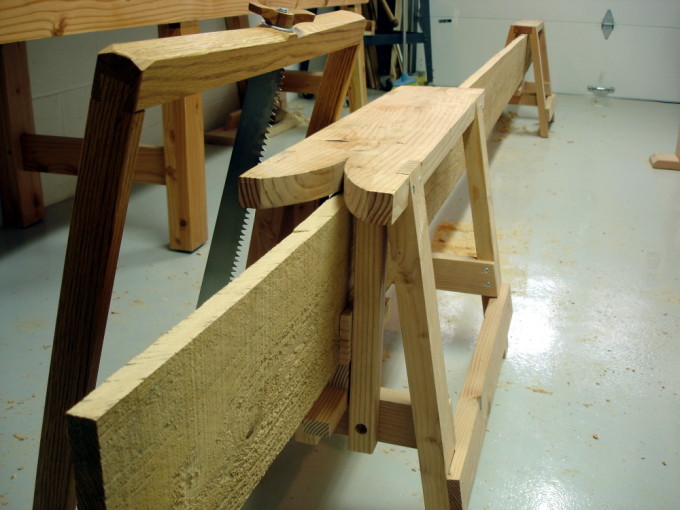
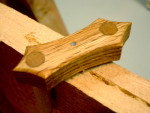
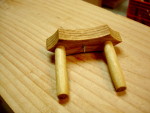
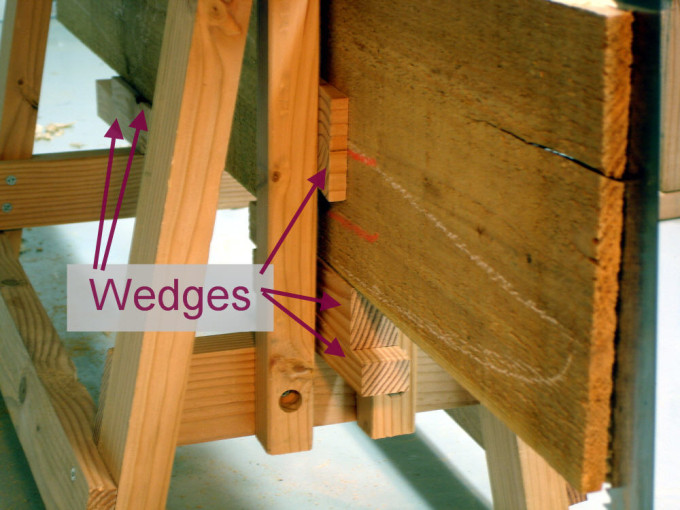
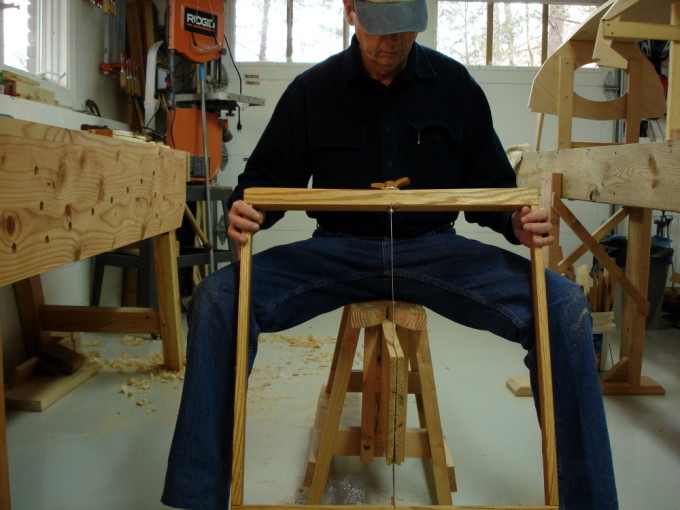
Leave a Reply